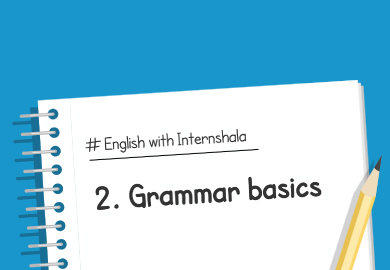How to use active and passive voice effectively
In this article of English with Internshala, we will learn the ropes of active and passive voice in the English language. With the help of a couple of handpicked YouTube videos, you’ll learn how to convert active sentences into passive ones effectively. However, before you do that, take this quick quiz to test your understanding of the above-mentioned topic and see where you stand.
In an active sentence, the subject of the sentence performs the action expressed in the verb on an object or person (Ex. Teacher was scolding Kinshuk for coming late). Active voice is mostly used for non-scientific writing, and it keeps the sentences from becoming too complicated or wordy.
A passive sentence, on the other hand, begins with the object or person that the action is performed on; the subject performing the action may appear in a “by the…” phrase or can be simply omitted (Ex. Kinshuk was scolded for coming late). Passive voice is mainly used when the subject is obvious, unimportant, or unknown.
YouTube Video Channel –Anglo-Link
Imperative sentences:
A direct sentence which expresses command, request, or advice is called as an imperative sentence. (Ex. – Open the door) Changing these sentences to passive voice is a bit tricky and follows certain rules. The word “let” is added before the sentence in passive voice. Auxiliary verb “be” is added after the object and main verb is changed to its third form (past participle).
Example – Speak the truth (imperative)
Let the truth be spoken (passive)
Let’s watch this short video for a better understanding.
YouTube Video Channel-Learn English with Let’s Talk
We hope this was helpful. For a better grasp on this topic, do this exciting assignment by clicking on the next button below. You can go back to the previous article by clicking on the previous button.
PS – Do tell us in comments what do you think of English with Internshala initiative and how we can make it more useful for you.





